Knowledge in the field of botany can be of benefit to many people. Thanks to them, you can get acquainted with the patterns of plant development, their structure, as well as useful and harmful properties. Thanks to this information, a person becomes more knowledgeable in and understands which plants should be used to treat certain ailments. Therefore, it is not surprising that people began to show interest in plants in ancient times.
Throughout history, people not only cultivated crops, looked after them, but also identified their patterns, thanks to which they found effective use for cultivated plants. But it should be borne in mind that among the plants there are also those that able to harm health... Therefore, even before bringing flowers into the house, you must carefully familiarize yourself with their features.
Among the representatives of the plant world there are many flowers that compare favorably with their relatives. One of these is an evergreen-leaved shrub known as marsh rosemary. During its flowering, you can feel a very strong aroma, which has an extremely negative effect on a person, provoking headaches and nervous disorders in him. There are many legends associated with wild rosemary. In those days, there was even a belief that this plant can help in the fight against spiritual and physical problems. Therefore, in order to clarify this issue, it does not hurt to get acquainted with the beneficial properties and contraindications to the use of this evergreen shrub.
Content
Botanical description of wild rosemary
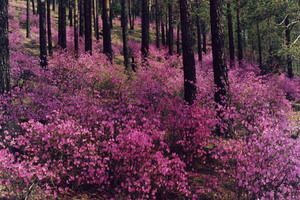 This shrub includes about 10 species of plants of the genus heather... Only four are represented on the territory of our country. This plant itself is known under several names: rosemary, bagnom, gushatnik. Often it can be found in summer cottages, where it is assigned the role of an ornamental plant. Ledum is a medium-sized plant that can grow up to 125 cm. During its growth, it forms branched branches, which are decorated with densely planted leaves. In the wild, it is often represented in the form of huge plantations.
This shrub includes about 10 species of plants of the genus heather... Only four are represented on the territory of our country. This plant itself is known under several names: rosemary, bagnom, gushatnik. Often it can be found in summer cottages, where it is assigned the role of an ornamental plant. Ledum is a medium-sized plant that can grow up to 125 cm. During its growth, it forms branched branches, which are decorated with densely planted leaves. In the wild, it is often represented in the form of huge plantations.
Ledum is different enough long growing seasonwhich has been going on for four years. During its flowering, the surrounding landscape is transformed, the whole area is saturated with a pleasant aroma. At this stage, the branches of the bush are decorated with white or light pink flowers that have curled edges, which provide a cover of velvet brown hairs. The buds contain many poisonous essential oils, from which a strong smell emanates.
In no case should this shrub be brought into the house. In nature, wild rosemary is propagated by seeds. If you want to grow it on your site in the Moscow region, then the method of grafting and dividing the bush is usually used here. However, you need to immediately prepare for the fact that you will have to be patient until you can get an adult plant from a young seedling.Moreover, this is not influenced by the growing conditions. Typically, one rosemary bush lives for about 30 years. If his grown in swampy areas, then his life expectancy decreases.
Where does marsh rosemary grow?
This plant is undemanding to soil quality. However, it does best in wet areas. Ledum perfectly tolerates negative temperatures, but at the same time requires special care and feeding. Most often, it can be found in the northern hemisphere: the Far East, America, Greenland and Belarus. You can stumble upon this shrub on the hills, peat bogs, swamps, and in addition, in forest and tundra areas.
Harvesting and storage conditions
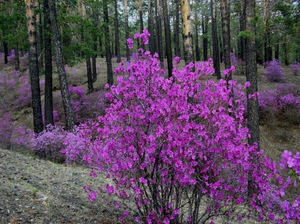 If this shrub is intended for the manufacture of medicines, then its collection begins already during active flowering, using shoots with stems and branches for this. Usually a good time to work occurs in early July and August... During the harvesting of the plant, you should be very careful; it is recommended to use special scissors, gloves and a gauze bandage for this purpose. It is very important to avoid damage to the root system.
If this shrub is intended for the manufacture of medicines, then its collection begins already during active flowering, using shoots with stems and branches for this. Usually a good time to work occurs in early July and August... During the harvesting of the plant, you should be very careful; it is recommended to use special scissors, gloves and a gauze bandage for this purpose. It is very important to avoid damage to the root system.
When the wild rosemary shoots are harvested, they are placed for drying in non-residential premises, where there should be good ventilation. There he should lie for about two weeks. When the raw material reaches the desired state, it is packed in fabric or paper bags. You can store it for a maximum of three years, but always separate from food.
Incoming components
Ledum is prized primarily due to the presence of essential oil in its composition, which is abundant in the ground parts of the shrub, first of all, shoots, branches, leaves, fruits and flowers. Moreover, in each case, the amount of essential oil may be different. The place where the shrub grows is of decisive importance here. It should be said that the essential oil contains icewhich is highly poisonous. Its characteristic color is green, while it is distinguished by its thick consistency and pungent taste.
Despite the danger of icebreaking, it can be beneficial because it has an enveloping and antitussive effect. However, it demonstrates these healing properties provided that it is consumed in small quantities. This substance is often included in many medications that have a bactericidal, sedative effect. Also, their doctors recommend taking them to stabilize high blood pressure. Wild rosemary flowers are useful because they contain a large number of:
- ascorbic acid;
- a complex of essential trace elements;
- phytoncides;
- flavonoids.
Pharmacological appointment
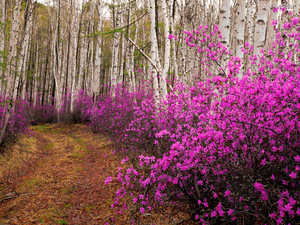 In folk medicine, wild rosemary has been actively used for many centuries. For the first time, a person in our country got acquainted with the beneficial properties of wild rosemary back in the seventeenth century. There is a special work written by folk healers, which is better known as "All about the benefits of stinking heather", which contains effective recipes for treating various ailments. Today, they continue to show increased attention to wild rosemary, and, according to the results of the latest clinical studies, it was possible to establish the presence of bactericidal and anti-inflammatory properties.
In folk medicine, wild rosemary has been actively used for many centuries. For the first time, a person in our country got acquainted with the beneficial properties of wild rosemary back in the seventeenth century. There is a special work written by folk healers, which is better known as "All about the benefits of stinking heather", which contains effective recipes for treating various ailments. Today, they continue to show increased attention to wild rosemary, and, according to the results of the latest clinical studies, it was possible to establish the presence of bactericidal and anti-inflammatory properties.
When using a decoction with infusions, you can alleviate the condition of people suffering from bronchopulmonary diseases. It also has an expectorant effect, allows you to thin phlegm, and eliminates inflammation. Ledum has pronounced therapeutic properties, in which it can successfully compete with many more well-known medicinal herbs. Often it is recommended to use it for such serious diseases as:
- tuberculosis;
- whooping cough;
- gout;
- rheumatoid pathology.
For many centuries, a decoction from this shrub has been used for the treatment of heart failure, diseases of internal organs, hypertensive crisis. A decoction of wild rosemary proved to be excellent as an antihistamine. The infusion of this plant is very effective in treating children and adults who have been diagnosed with helminthic infestation. Medicines from wild rosemary are widely used in homeopathy, since they help to increase immunity, minimize the risk of catching a cold during an epidemic.
The valuable parts of the plant are flowers, stems and shoots, which have a slight sedative, disinfectant, wound healing and hypnotic effect. A leaf-based decoction has healing properties, which can be used to wash the sinuses, in the form of compresses for skin lesions. Also, this remedy can bring relief from frostbite, puffiness, dermatological diseases, and also help restore blood circulation in the extremities.
How is it used in other areas?
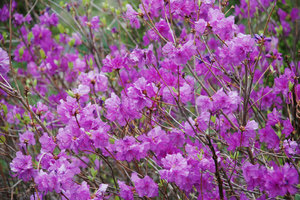 Most veterinarians are familiar with the properties of rosemary rosemary, which is often used in their work. Although many modern drugs are available today, products based on this raw material are still used today to treat livestock during various diseases. However, here you need to be very careful, because without knowledge and experience in handling this plant, you can harm animals. Wild rosemary products help protect livestock from insects. Also, many gardeners are familiar with wild rosemary, who prepare effective infusions from it for pest control.
Most veterinarians are familiar with the properties of rosemary rosemary, which is often used in their work. Although many modern drugs are available today, products based on this raw material are still used today to treat livestock during various diseases. However, here you need to be very careful, because without knowledge and experience in handling this plant, you can harm animals. Wild rosemary products help protect livestock from insects. Also, many gardeners are familiar with wild rosemary, who prepare effective infusions from it for pest control.
Plant can help to deal with moths too: for this, the ground parts must be dried, ground into powder and placed in a cabinet. There is information about the use of this plant in the textile and perfume industries. It is used for processing leather, making soap and toilet water. Although this plant has many beneficial properties, it must be handled with great care, as it can be harmful if used incorrectly.
Precautions
Let us remind you once again that a poisonous substance is present in the wild rosemary. It poses the greatest danger during flowering, since in this state it thinns a lot of essential oils. If you inhale this smell for a long time, then a person may complain of dizziness, nausea, vomiting, migraine, and sometimes limb paralysis may occur... Considering all this, it is important to very carefully take medications from rosemary, strictly observing the recommended dosages.
If you exceed the permissible dose, then taking the drug from wild rosemary can lead to severe poisoning, spastic conditions, which manifest themselves in the form of paralysis of the heart and respiratory function, and in addition, this can adversely affect the gastrointestinal mucosa. Immediately you need to stop using drugs based on wild rosemary for people who suffer from the following diseases:
- hypotension;
- vegetative disorders;
- kidney pathology;
- hepatitis.
Flowering shrubs should be avoided by pregnant and lactating women. Those people who are not subject to the above contraindications are allowed to use folk recipes based on marsh grass.
Drink for bronchopulmonary diseases
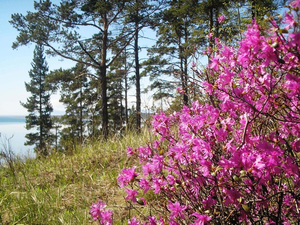 For this means you will need shoots or flowers of the plantcollected in the current season. To prepare several servings, take a large spoonful of dry raw materials, add 500 ml of hot boiled water, cover the container with a lid and let it brew for 10-15 minutes. Ready infusion is taken in 1/2 cup 1 time per day. This remedy will benefit people who suffer from pneumonia, bronchi. The infusion is appreciated for its ability to thin phlegm and remove it.
For this means you will need shoots or flowers of the plantcollected in the current season. To prepare several servings, take a large spoonful of dry raw materials, add 500 ml of hot boiled water, cover the container with a lid and let it brew for 10-15 minutes. Ready infusion is taken in 1/2 cup 1 time per day. This remedy will benefit people who suffer from pneumonia, bronchi. The infusion is appreciated for its ability to thin phlegm and remove it.
Conclusion
Not all experienced gardeners can answer the question of where rosemary grows and how it can be used.In fact, this plant is unique because has many useful propertiesthat people knew about many centuries ago. However, despite its many beneficial qualities, it should be used with caution due to the fact that it contains a poisonous substance. You should stay away from this shrub during its flowering, since it is at this stage of development that it poses the greatest danger to human health.

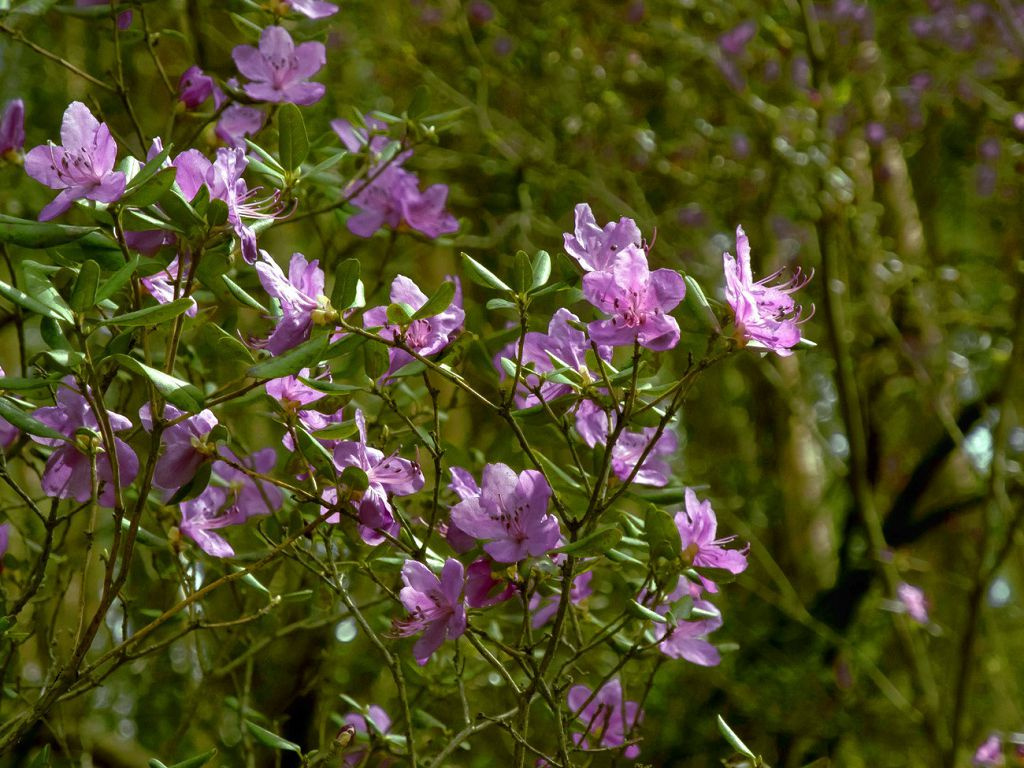
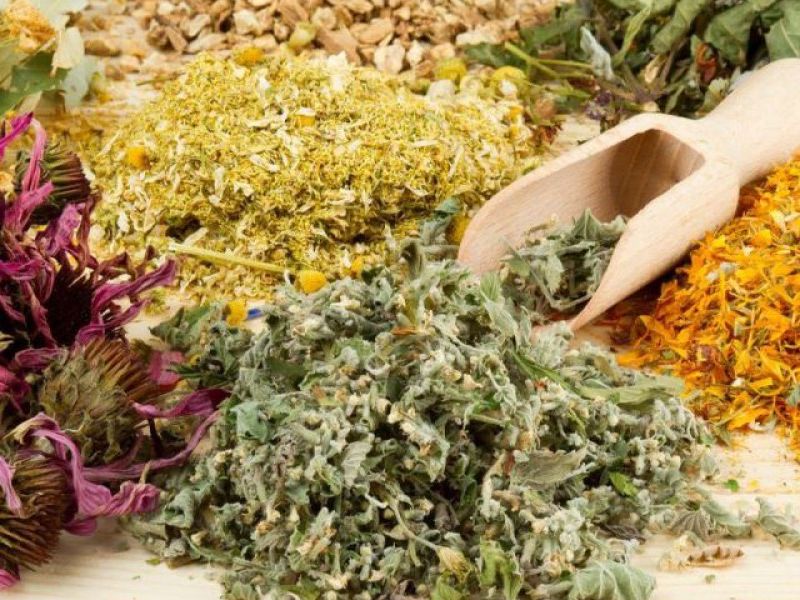
1 comment